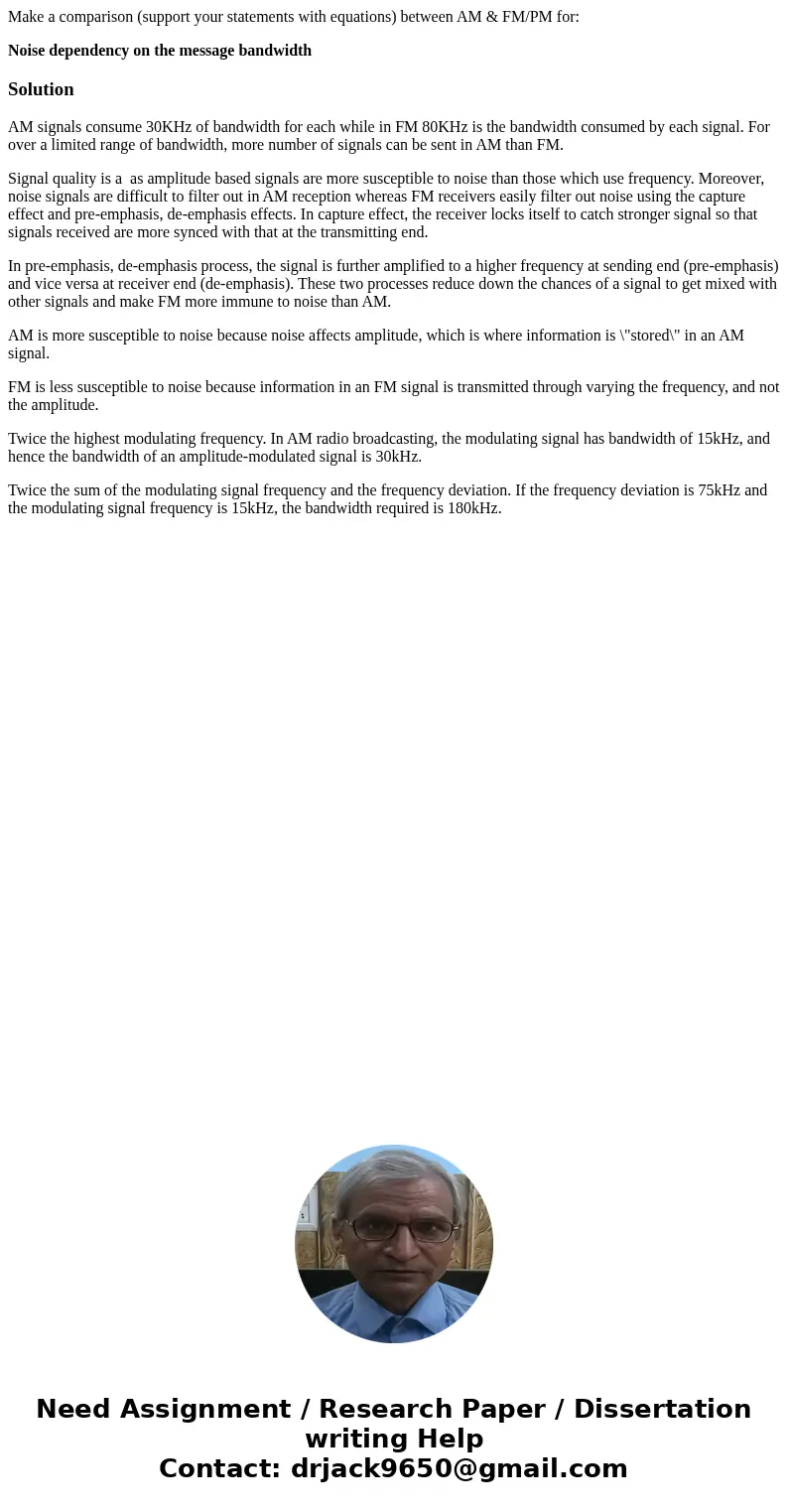Make a comparison support your statements with equations bet
Make a comparison (support your statements with equations) between AM & FM/PM for:
Noise dependency on the message bandwidth
Solution
AM signals consume 30KHz of bandwidth for each while in FM 80KHz is the bandwidth consumed by each signal. For over a limited range of bandwidth, more number of signals can be sent in AM than FM.
Signal quality is a as amplitude based signals are more susceptible to noise than those which use frequency. Moreover, noise signals are difficult to filter out in AM reception whereas FM receivers easily filter out noise using the capture effect and pre-emphasis, de-emphasis effects. In capture effect, the receiver locks itself to catch stronger signal so that signals received are more synced with that at the transmitting end.
In pre-emphasis, de-emphasis process, the signal is further amplified to a higher frequency at sending end (pre-emphasis) and vice versa at receiver end (de-emphasis). These two processes reduce down the chances of a signal to get mixed with other signals and make FM more immune to noise than AM.
AM is more susceptible to noise because noise affects amplitude, which is where information is \"stored\" in an AM signal.
FM is less susceptible to noise because information in an FM signal is transmitted through varying the frequency, and not the amplitude.
Twice the highest modulating frequency. In AM radio broadcasting, the modulating signal has bandwidth of 15kHz, and hence the bandwidth of an amplitude-modulated signal is 30kHz.
Twice the sum of the modulating signal frequency and the frequency deviation. If the frequency deviation is 75kHz and the modulating signal frequency is 15kHz, the bandwidth required is 180kHz.

 Homework Sourse
Homework Sourse